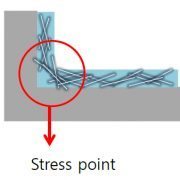ETRI Reveals Graphene Applied OLED Lighting
At R&D Korea 2015 (November 19-21), ETRI (Electronics and Telecommunications Research Institute) revealed OLED lighting and graphene related research results.
Since 2013, ETRI has been participating in ‘Graphene Applied OLED Device/Panel Technology Development’ project as a supervising organization. This project is a part of ‘Graphene Device/Component Commercialization Technology Business’, which is a Korean national project. This project’s ultimate aims include development of graphene electrode material with ≥15Ω sheet resistance, ≥90% transmittance, 3nm thickness, ≤5% sheet resistance uniformity, ≤5nm surface profile, and ≥5.5 generation area, graphene based protection layer that can be used for 5.5 generation 55inch OLED panel with ≤10-6 g/m2 WVTR, graphene anode OLED with ≥90% external quantum efficiency compared to ITO anode OLED, and diagonally 1300mm OLED panel prototype.
In this exhibition, ETRI presented OLED lighting that used graphene as the electrode. ETRI’s Dr. Jeong-Ik Lee explained that recently interest in graphene electrode is increasing to replace ITO electrode and to apply graphene electrode, optical, electrical, and process issues have to be considered. When graphene is used as OLED electrode instead of ITO, thickness and refractive index change optically and electrically energy levels change, and these have to be considered when designing. He also emphasized that in terms of process, it has to be designed keeping in mind of before and after process of electrode procedure. Dr. Lee revealed that at present optical and electrical issues are solved while the process issues are in research stage, and they are planning to present the results of this research within this year.
Graphene, with its high resistivity, is known as next generation electrode material favorable to flexible and foldable. Dr. Lee pointed out that graphene has wider viewing angle than ITO when used as transparent electrode is another important advantage, and particularly as white light source’s spectrum cannot change according to the viewing angle, graphene is suitable for application.
Graphene is a key material with a wide arrange of applications, it is being developed in diverse areas such as OLED encapsulation as well as in electrode sector. The Ministry of Science, ICT and Future Planning of Korea estimated that domestic graphene market will record 19 billion KRW until 2025. Korea Evaluation Institute of Industrial Technology, the organization in charge of this national project, gave their target as developing 9 top technology through graphene and achieve 17 billion KRW sales. Regarding this, Dr. Lee emphasized compared to other countries, Korean investment in graphene is relatively low and that now is the time for the Korean corporations and government agencies to pay more attention higher value-added businesses.



























































